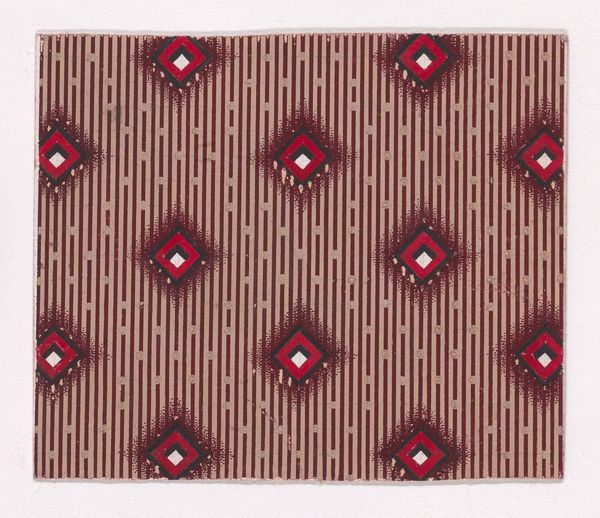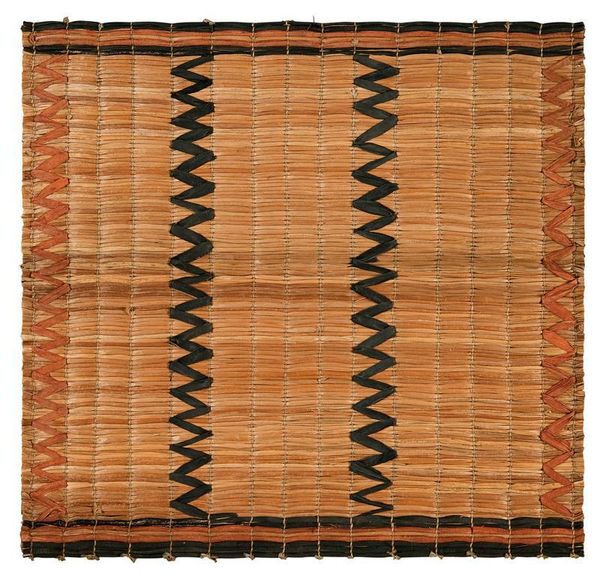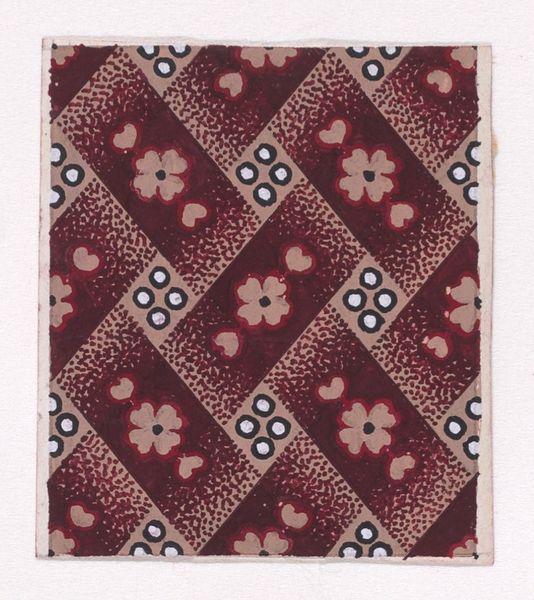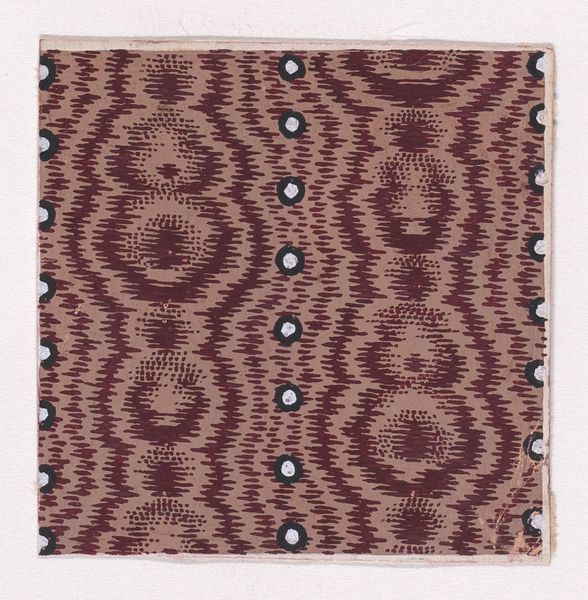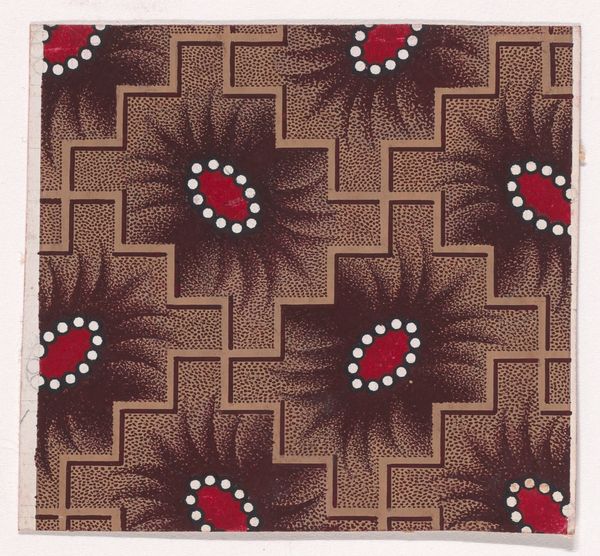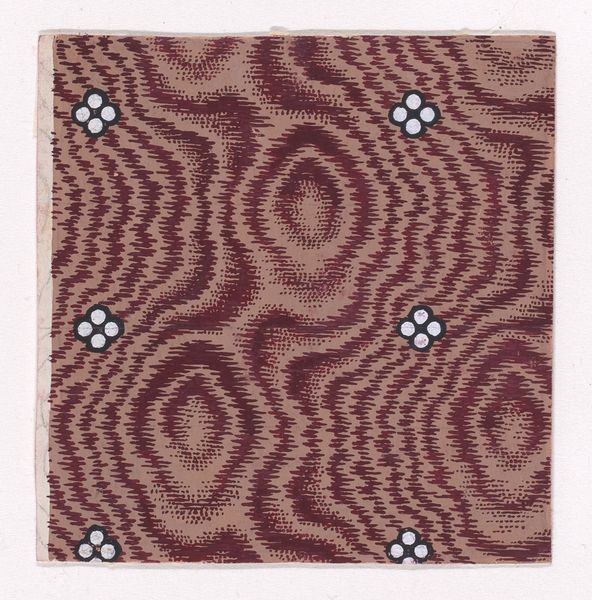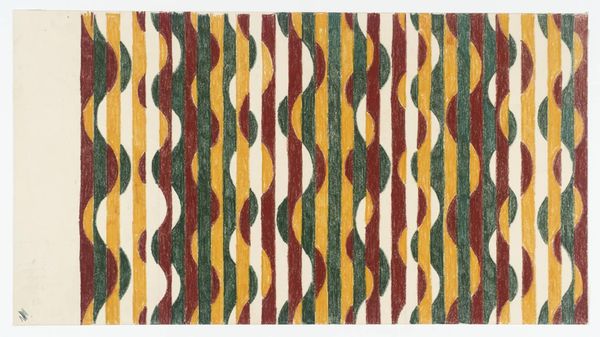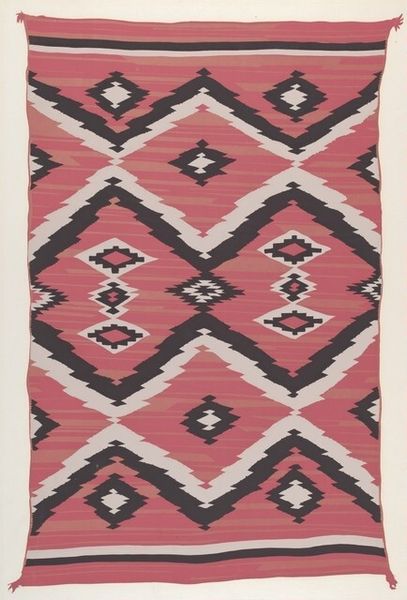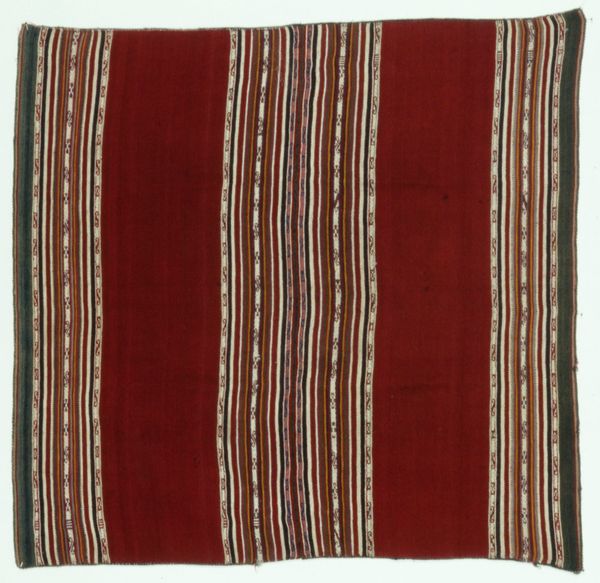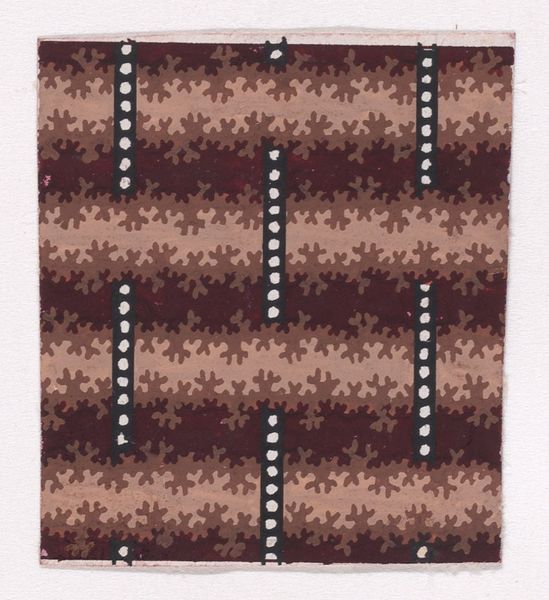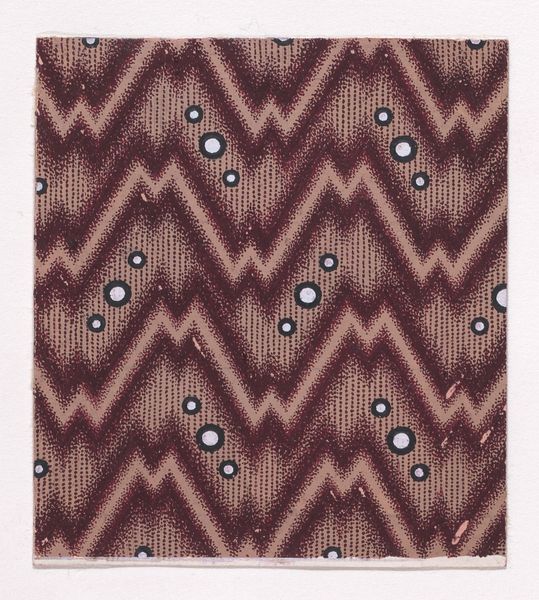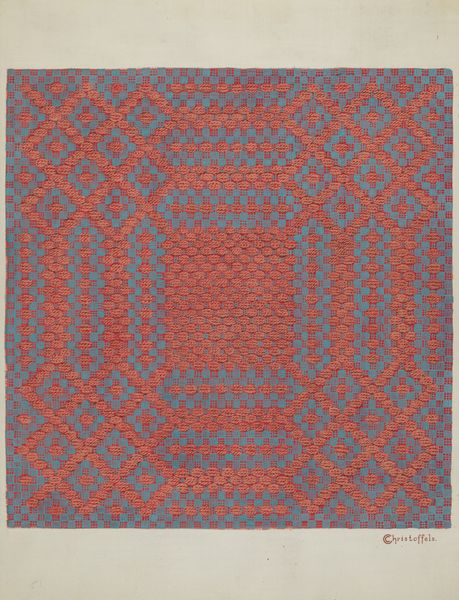
Textile Design with Alternating Lozenges over a Striped Background 1840
0:00
0:00
textile
#
textile
#
geometric pattern
#
organic pattern
#
geometric
#
vertical pattern
#
pattern repetition
#
textile design
#
imprinted textile
Dimensions: Sheet: 2 11/16 × 3 1/16 in. (6.9 × 7.8 cm)
Copyright: Public Domain
Editor: This is an anonymous textile design from 1840, entitled "Textile Design with Alternating Lozenges over a Striped Background," currently residing at the Metropolitan Museum of Art. I'm immediately drawn to the rhythmic repetition. What is your perspective on this piece? Curator: I note how the alternating lozenges and stripes function in a visually stimulating tension. The ground presents as a regulated sequence, disrupted only by imposed lozenges. Are those disrupting forms organically organized? Or do you recognize another pattern governing them? Editor: It seems like the lozenges are in a grid, set slightly off from the stripes themselves, giving the overall impression of complex overlapping systems. The fuzzy texture around the diamonds makes it feel almost like they are vibrating against the striped background. How does that contribute to the work, structurally? Curator: Indeed. Consider how this visual vibration introduces dynamism. It challenges the rigidity typically associated with geometric designs. What would you make of the color at play? Editor: Well, the restricted palette, mainly just red and beige, forces the viewer to focus on the relationship between the forms themselves, not any sort of elaborate color story. The small spots of black and white add to the definition. I like how it looks handmade because of that. Curator: Precisely. And does that materiality—the evidence of the artist’s hand, however subtle—suggest any particular readings, particularly when paired with the industrialized nature of textile production? Editor: I hadn’t considered that tension before! So it’s about handmade *versus* mass produced. Now I'm starting to wonder about how this design would interact with the form of a garment. Thank you for pointing that out.
Comments
No comments
Be the first to comment and join the conversation on the ultimate creative platform.
